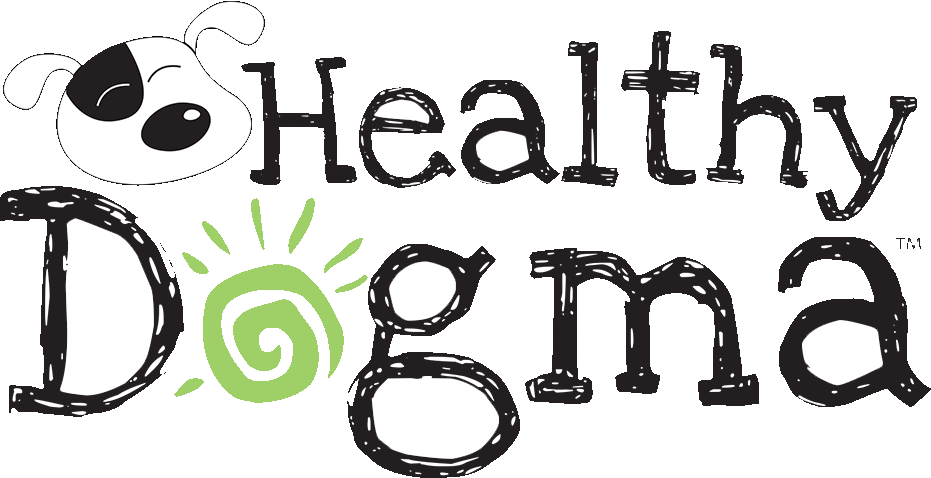Have you ever wondered if carbohydrates are an essential part of your dog's diet? Let's get right to the heart of it, the answer is no.
In fact, leading organizations that set pet food guidelines, such as the American Association of Feed Control Officials and the National Research Council, do not list carbs as a required nutrient for dogs. Yet, Most commercial pet foods, including some that vets might suggest, often contain between 30% and 60% carbohydrates.
It's true that keeping your dog's blood sugar (glucose) balanced and at a healthy level is significant for them. But the interesting thing is that they don't actually have to eat carbohydrates for that to happen. We'll explain more about how their system takes care of this.
How Your Dog's Body Handles Food
Your dog's digestive system is designed to process the type of food their wild ancestors ate, which was mostly other animals. One key difference from humans is that dogs don't produce an enzyme called amylase in their saliva. This enzyme is what helps people begin to break down starchy foods as soon as they start chewing.
While they don't have it in their saliva, dogs do make a small amount of amylase in their pancreas. This means they can digest small quantities like grasses, seeds, and other plant-based matter. This makes sense because these are the kinds of food that would have been in the stomachs of the prey their ancestors hunted and consumed.
Because they lack that amylase in their saliva, trying to digest processed foods rich in carbohydrates makes their digestive system work much harder than it should. Over time, this can lead to different health issues, including obesity, diabetes, and even cancer. This is why feeding a healthy, fresh diet, or one that closely matches what they evolved to eat, is generally a healthier approach.
How Dogs Naturally Manage Blood Sugar Without Carbs
When dogs eat a diet that's rich in proteins and fats but doesn't include carbohydrates, their bodies have smart ways to keep their blood sugar levels stable. These natural processes also help prevent the big ups and downs in sugar that often happen with foods full of carbs.
This ability to create sugar from non-carbohydrate sources has a scientific name, “gluconeogenesis”. It sounds complicated, but it simply breaks down to “gluco” (for glucose, or sugar), “neo” (meaning new), and “genesis” (meaning creation). So, it's just about making new sugar.
The body's smart ways to create glucose:
One way your dog's body makes this new glucose is by using amino acids, which are the fundamental units that proteins are made of. Certain amino acids, like serine, alanine, and glycine, can be transformed into glucose. This conversion process happens in the liver, with the help of specific enzymes.
While these amino acids can serve as an energy source, their contributions to your dog's health extend much further. They play an essential role in building and mending crucial body tissues, from their coat and nails to their bones, muscles, cartilage, and skin.
Many of the body's enzymes and hormones are also made from amino acids. So, if a dog is going to rely on amino acids for energy over the long term, their diet needs to be high in protein. This ensures there are enough amino acids left over to do all those other urgent tasks. Alternatively, a diet higher in fat can provide another energy source for dogs.
Another method the body uses to make glucose without carbs is called the Cori cycle. Here's how it works:
When the body converts food into energy, a substance called lactate is produced, which can then accumulate in the muscle cells. From the muscles, this lactate is transported to the liver. Once in the liver, the process of gluconeogenesis (that “new sugar creation” we talked about, remember?) changes the lactate back into glucose. This newly formed glucose then makes its way back to the muscles, ready to be used as an energy source.
The final way we'll look at how a dog makes glucose without carbohydrates involves a type of fat called triglycerides, which are present both in the food your dog consumes and as stored body fat. When these triglycerides are broken down, they release fatty acids and a substance named glycerol. This glycerol is key because the liver can use it to create glucose, and the amount of glucose produced is directly tied to how much glycerol is freed up when these fats are processed.
Carbohydrates for Dogs | Good vs. Not-So-Good
Not all carbohydrates are indeed harmful for dogs. This brings up a good question, how can you tell the difference between the good and not-so-good ones, and what are the reasons behind it?
To understand them better, know that carbohydrates are generally grouped into three main types: sugar, starch, and fiber.
First, let's look at simple carbohydrates:
These are, as the name suggests, the more basic type of carb. Consider these primarily “sugars” as they are formed from small sugar units. You'll find them in heavily processed grains and white rice, and they also appear naturally in fruit as fructose and dairy products as lactose.
Because they are so simple, they are digested and absorbed by the body very quickly. This means common sugars like sucrose and glucose provide a fast, but short-lived, burst of energy.
Then there are complex carbohydrates,
These are different because they're made of many sugar units linked together in long, more intricate chains (technically called polysaccharides). Because their structure is more complex, they take longer for your dog's body to digest. This group includes “starches” and “fibers”. You'll find these beneficial fibers only in whole, natural plant foods like vegetables.
The big benefit of complex carbohydrates is that they provide energy that's released slowly and continuously. They also help with digestion, support the immune and nervous systems, and play a role in keeping your dog's metabolism working smoothly.
Final Thoughts
So, it's clear that dogs can live very well and be perfectly healthy on a diet that doesn't contain carbohydrates. The really important thing, however, is to make sure they get good-quality animal proteins and fats. These are crucial for many reasons, including helping all those natural body pathways we talked about work at their best. This, in turn, helps keep your dog's blood sugar levels nice and steady.
Did you know that Healthy Dogma is a pet food company right here in Michigan? We specialize in creating formulas with natural, clean ingredients. Our options include foods that are 100% free from grains, gluten, and common allergens. We achieve this by working closely with farmers in the Midwest, suppliers based in the U.S., and other partners we trust.
If this is your first time visiting us, we’d love for you to explore our Homestyle PetMix Meal Lineup, which is designed to be like a homemade meal for your dog.
Thanks for reading!
Healthy Dogma Team x


